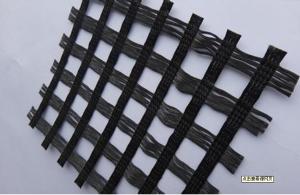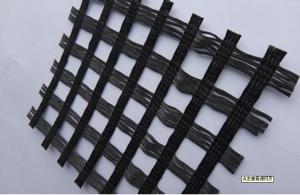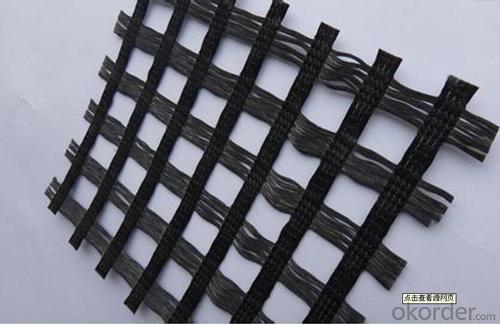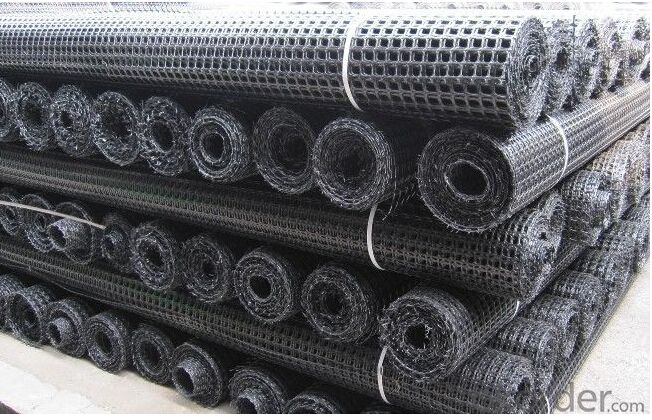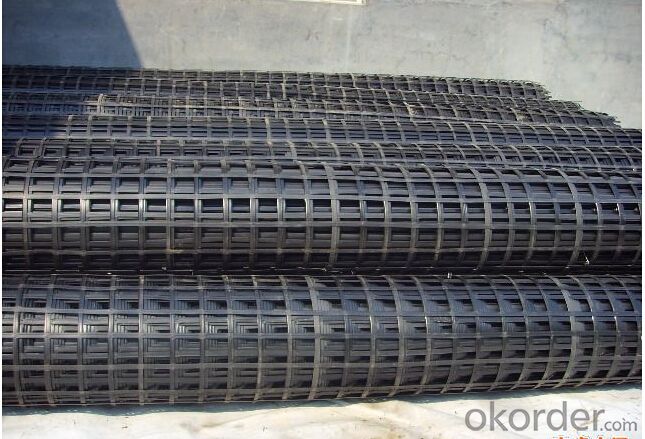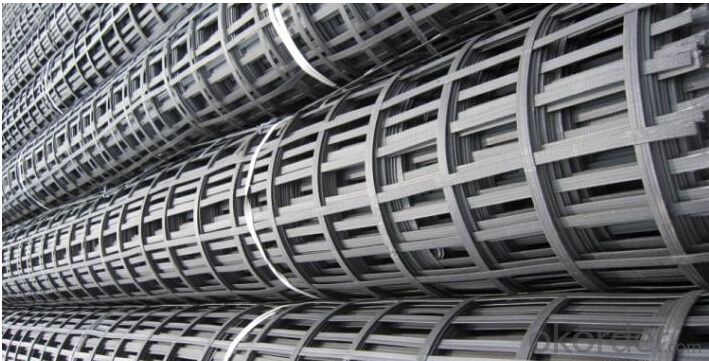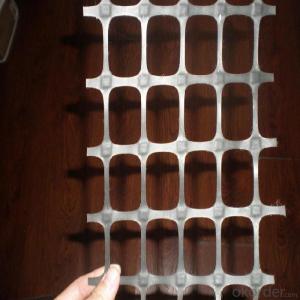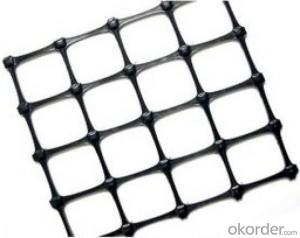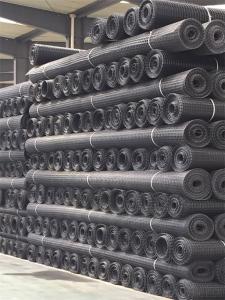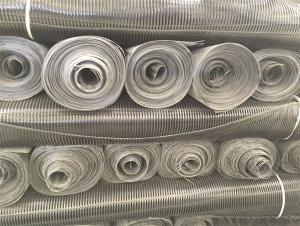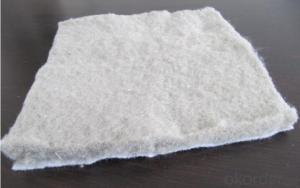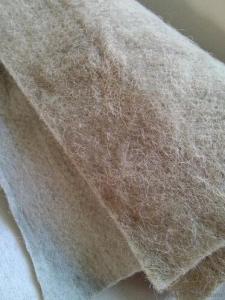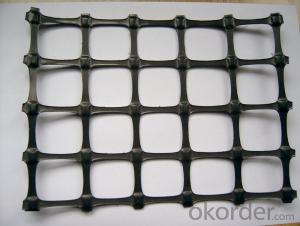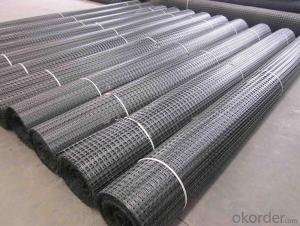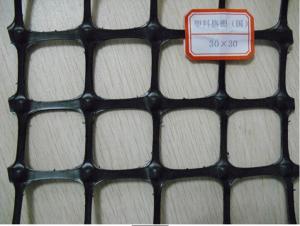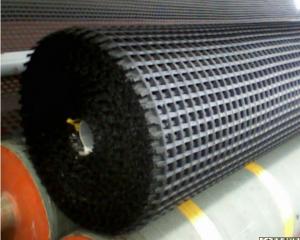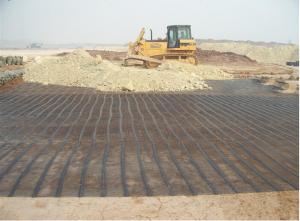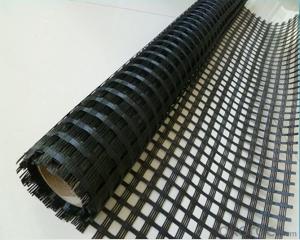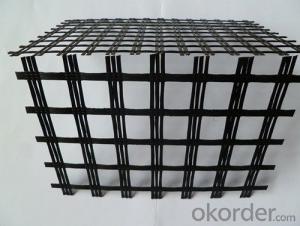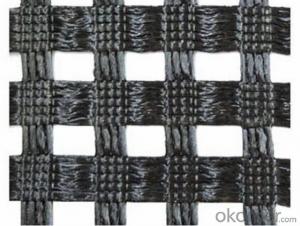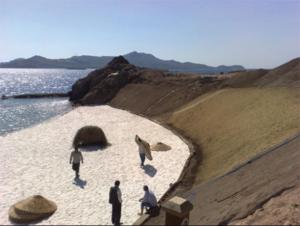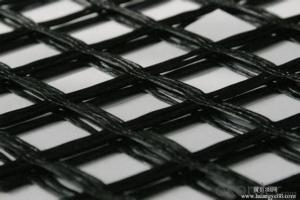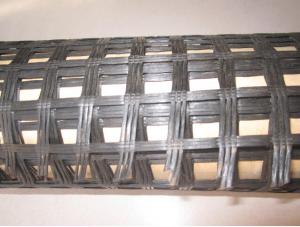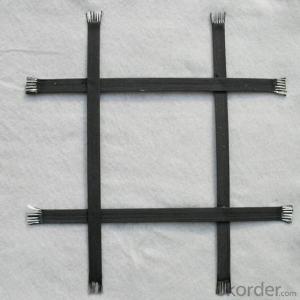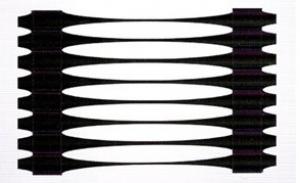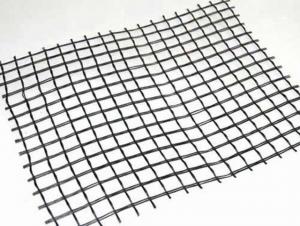Geocells for Driveways - Polyester Geogrid with PVC Coating (Warp Knitting) 13% Elongation/30KN*30KN-200KN*120KN
- Loading Port:
- China Main Port
- Payment Terms:
- TT or LC
- Min Order Qty:
- 5000 Square Meters m²
- Supply Capability:
- 120000 Square Meters m²/month
OKorder Service Pledge
OKorder Financial Service
You Might Also Like
Polyester Geogrid with PVC Coating(Warp Knitting) 13% Elongation/30KN*30KN-200KN*120KN
1. Introduction of Polyester Geogrid with PVC Coating(Warp Knitting) 13% Elongation/30KN*30KN-200KN*120KN
High strength polyester warpknitting geogrid adopts high strength, high modulus, and low shrinkage twisting industrial polyester fiber as raw material. It is warp knitted with oriented structure and in the condition of no bending among warp and weft direction.
Its crossing points are bundled and bended together by high strength long polyester fiber forming tough conjunction. Then it forms into mesh size product after coated with high quality watersoluble PVC which improves its strength, various technical standards and gives full play of its mechanical property.
2. Performance of Polyester Geogrid with PVC Coating(Warp Knitting) 13% Elongation/30KN*30KN-200KN*120KN
High tensile strength
Low elongation
Excellent temperature resistant
Good anti-aging
Good alkali-resistance
3. Application of Polyester Geogrid with PVC Coating(Warp Knitting) 13% Elongation/30KN*30KN-200KN*120KN
Strengthening soft roadbed of high-class roads and high speed railways, separating different subgrade soil material.
Using in reclamation engineering, dam, landslides and retaining wall.
Enhancing various roadbeds.
Strengthening soft roadbed of airport.
4. Packing and Delivery of Polyester Geogrid with PVC Coating(Warp Knitting) 13% Elongation/30KN*30KN-200KN*120KN
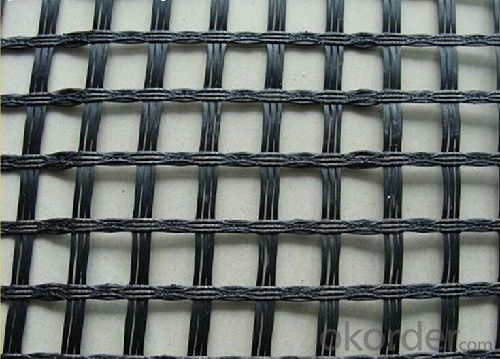
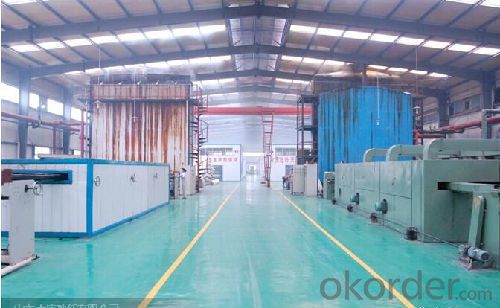
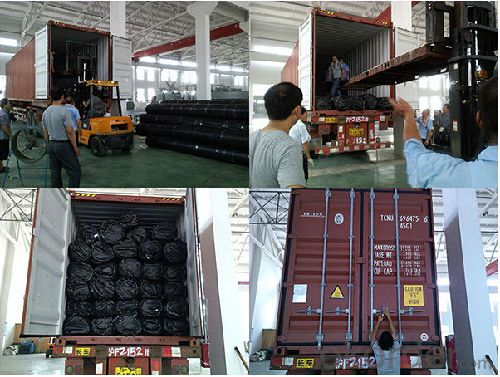
- Q: Can geogrids be used in temporary construction haul roads?
- Yes, geogrids can be used in temporary construction haul roads. Geogrids are commonly used to reinforce and stabilize the soil, providing additional strength and load-bearing capacity. They can effectively distribute the load from construction vehicles, reduce rutting, and increase the lifespan of temporary roads.
- Q: Is there a big difference between horizontal permeability and vertical permeability coefficient
- For example, geotextile, geomembrane, soft water pipes, etc.. According to the direction of the water flow, the coefficient of permeability of the geotextile is measured
- Q: What are the design considerations for geogrid-reinforced embankments?
- Some design considerations for geogrid-reinforced embankments include selecting the appropriate geogrid materials and properties based on the soil conditions, determining the required geogrid strength and stiffness, ensuring proper installation and connection of the geogrid, considering the potential for differential settlements, evaluating the long-term performance and durability of the geogrid, and considering the overall stability and safety of the embankment structure.
- Q: Can geogrids be used in retaining walls for highway sound barriers?
- Yes, geogrids can be used in retaining walls for highway sound barriers. Geogrids are often used in retaining walls to provide additional reinforcement and stability. They help distribute the load and improve the overall strength of the retaining wall. In the case of highway sound barriers, geogrids can be utilized to enhance the structural integrity of the wall while also reducing noise pollution.
- Q: How do geogrids enhance the performance of geotextiles?
- Geogrids enhance the performance of geotextiles by providing additional reinforcement and stability to the soil. They work by interlocking with the soil particles and distributing the applied loads more evenly, which helps to prevent soil erosion, improve load-bearing capacity, and increase the overall strength and durability of the geotextile system.
- Q: GDZ150 type one-way steel plastic welding geogrid D in the construction of the roadbed is horizontal paving also vertical spread?
- The direction of the pulling force is consistent with the direction of the road extension
- Q: Are geogrids effective in stabilizing riverbanks?
- Yes, geogrids are effective in stabilizing riverbanks. Geogrids provide reinforcement and structural stability to the soil, preventing erosion and maintaining the integrity of the riverbank. They help distribute loads and reduce the potential for slope failures, making them a reliable solution for stabilizing riverbanks.
- Q: High density polyethylene one-way geogrid, tensile yield of 20kn/m
- NamelyUnidirectional geogrid with tensile yield of 20kn/m
- Q: In the middle of geogrid foundation treatment process is belongs to the concealed work it
- According to the definition of concealed engineering
- Q: What are the differences between geogrids and geonets?
- Geogrids and geonets are both geosynthetic materials used in civil engineering and construction, but they serve different purposes. Geogrids are typically used for soil reinforcement and stabilization, providing tensile strength to improve the stability of soil structures. On the other hand, geonets are primarily used for drainage applications, allowing the flow of water while retaining soil particles. In summary, geogrids enhance soil stability, while geonets aid in drainage.
1. Manufacturer Overview
| Location | 示范:Hebei, China |
| Year Established | 示范:1997 |
| Annual Output Value | 示范:Above US$50 Million |
| Main Markets | 30.00% South America; 20.00% North America; 15.00% Eastern Europe; 15.00% Southeast Asia; 10.00% South Asia; 5.00% Southern Europe; 5.00% Africa |
| Company Certifications | ISO 9001:2008 |
2. Manufacturer Certificates
| a) Certification Name | |
| Range | |
| Reference | |
| Validity Period |
3. Manufacturer Capability
| a) Trade Capacity | |
| Nearest Port | Tianjin;Qingdao;Shanghai |
| Export Percentage | |
| No.of Employees in Trade Department | 21-50 People |
| Language Spoken: | English;Chinese |
| b) Factory Information | |
| Factory Size: | Above 100,000 square meters |
| No. of Production Lines | Above 12 |
| Contract Manufacturing | OEM Service Offered;Design Service Offered |
| Product Price Range | High;Average |
Send your message to us
Geocells for Driveways - Polyester Geogrid with PVC Coating (Warp Knitting) 13% Elongation/30KN*30KN-200KN*120KN
- Loading Port:
- China Main Port
- Payment Terms:
- TT or LC
- Min Order Qty:
- 5000 Square Meters m²
- Supply Capability:
- 120000 Square Meters m²/month
OKorder Service Pledge
OKorder Financial Service
Similar products
Hot products
Hot Searches
Related keywords
